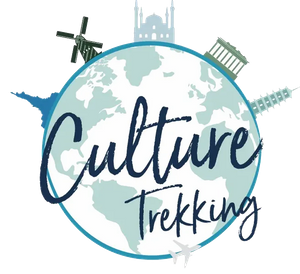
Capernaum, Church of Primacy of Peter, Bet Shean: My Pilgrimage through Israel
Capernaum (Kfar Nahum) was established in 2nd century BC, it was strategically located on the main trade route between Damascus and Egypt. It was here where the Roman toll booth's were, on the road or near the harbor that they collected taxes on your goods as you would go from one town to another. In the time that Jesus lived here, there were approximately 2,000-4,000 inhabitants of mostly fisherman, farmers, and merchants comprised of mostly conservative, devout Jews.
There is very little Archaeological evidence to support that Gentiles lived in this town at that time. In Bethsaida there is much more archeological evidence that Romans and Gentile influence, a Roman garrison was actually stationed nearby. A Roman centurion actually paid for the synagogue built for the Jewish community. Peter's house was actually in this same area, and over the years several worship houses were built on top of this, but virtually all were destroyed in the earthquake of 747 A.D. Peter's house was not rediscovered again until the late 1800's. The Franciscans acquired the ruins in 1894, and ultimately built a monastery and church over the site of Peter's house. Peter's house was actually pretty significant in Christianity, due to the fact that Peter's house is commonly where Jesus would stay while he was in Capernaum as he did not hold or own a home of his own. Actually most of the miracles & hearings happened in Peter's house, or rather Peter's mother-in-law's house (since it was tradition for people when they are married to live with their parents).
Capernaum was a small Jewish community, so there was no need for reading and writing. This likely means that Peter was illiterate. Now think about what Jesus tells him, 'through small and weak or humble things that the Lord can make them strong'. Interestingly enough, Matthew the Publican (or Tax collector is from Capernaum).
If you were to come into Capernaum the first thing that you would notice is the smell, it was a fishing village. There were fish that were dead or dying, women smoking the fish, children running in and out of the water, men mending nets and casting nets -- so in essence it takes a village to catch enough fish to sustain it and its occupants. The fishing boats were usually out all day long, and Capernaum would have been a chaotic and active with this work. The houses were usually covered with boughs of palm leaves and mud for a type of stucco. (Remember this for when you read the story of the men breaking the roof to lower a man into it).
Lunch was in a little café by the side of the Sea of Galilee, where we had fish that was caught just like it would have been in Jesus time. It was a little hard for me to see the fish's head and eat it and peel the skin off myself, but it was good because I was so hungry anyway.
It was in Capernaum that Peter, James and John are asked to be fishers of men, where he teaches at the synagogue. There were many miracles that occurred here, so much so that you could call it "The City of Miracles" here is a list of Miracles that occurred in the town itself with corresponding scriptures.
Healing of Nobleman's son (John 4:46-54), Calling of Andrew, Peter, James and John, miracle of catching fish (Matt 4:13-22; Luke 5:1-11), Savior's family comes to visit (John 2:12), Teaching in the synagogue (Mark 1:21), Casting out unclean spirit (synagogue)(Luke 4:31-37), Healing Peter's mother-in-law (right after casting out an unclean spirit)(Matt 8:14-17; Mark 1:29-31), Healing all manner of people (in Peter's house, right after healing his mother-in-law)(Mark 1:32-34); Forgiving and healing of Paralytic (in Peter's house?)(Mark 2:1-13; Matt 9); Calling of Matthew (Mark 2:14-17; Matt 9); Eats with publican (Matthew), Pharisees question him (Mark 2:16-22); Eats corn from fields nearby on Sabbath (Probably near Capernaum)(Mark 2:23-28; Luke 6:1-5); Heal's a withered man's hand (in synagogue)(prob Capernaum)(Mark 3:1-6; Luke 6:6-11); Taught by the sea side (Mark 3:7-9); Questions of fasting (Luke 5:33-39; Matt 9), Healing of Centurion's Servant (Luke 7:1-10); Raising of Jairus daughter (who also happened to be a leader of a synagoge)(Matt 9:18-26; Mark 5:21-43); healing of two blind men (Matt 9); Casting out devils from a possessed and dumb man (Matt 9); Bread of Life Sermon (synagogue)(John 6:22-71); Paying trubute/catching fish with money in its mouth (Matt 17:24-27); Question about who is the greatest among the Apostles (Mark 9:33-37); Heading towards Capernaum when Savior walks on water (John 6:17-21); ?Healing of demonic boy? (Mark 9:14-27)
But I think my personal favorite was when Professor Brent L Top told us the historical significance behind healing the woman with the 'issue of blood' (Mark 5:25-34). The issue of blood was actually a term in that time that referred to Menorrhagia, and in this instance was from the time she was in puberty until now. Under the Law of Moses, a woman is 'unclean during menstruation'-- this means that she could not worship in the synagogue, she could marry or have children, be a wife, an have posterity.....but she can't. People are thronging in the narrow streets of the city.
As Jesus is walking through these narrow streets, everyone is touching him; and yet all the sudden he turns and asks "who touched me?" Why wouldn't she just approach him like the rest? Because she is already a social outcast, and so she stays on the edges and then reaches out and touches the edge of his garment. It is important to note that in ancient times there is a hem along the bottom of the traditional garment that represents the Abrahamic covenant--- this actually represented posterity & fertility. So for this outcast woman with the issue of blood to touch the hem of his garment, is actually quite significant. The fringes that come out from under the shirts of those Jewish people we see in modern time, those are actually reminders of the same thing, the Abrahamic covenants. So when she touches him, he immediately feels the 'virtue' leave him, but this word virtue actually means power, so he felt his 'power' leave him and turns to ask who touched him. So just the hope of the promise of touching the blue hem along the garment to partake and have children according to the Abrahamic covenant. All of us have hopes and dreams, the woman was hopeless because she would not have blessings and because of her faith, Jesus promises that those hopes and dreams be fulfilled.
This was very significant for me, I remember being very moved by this story. Not only did I have my own 'issue of blood' as a teenager, that luckily was corrected thanks to modern medicine. But I am now also 33 years old, have a great career, have dated a lot, but somehow it never ends up working out. I feel that my hopes and dreams are slipping away for my own dream of having children and a family. Most of my friends are now married, some divorced and remarried, I look at pictures of children on Facebook and it makes my heart ache ever so slightly.
I try to push this feeling off as, 'don't be jealous', but I also need to acknowledge that it is a real feeling, that the loss I am beginning to feel is real and not just based on jealousy. In my religious culture, the women get married VERY young, so being 33 now I'm sort of a misfit and in my own way, feel a little like an outcast as well. So I identify with this woman completely, on so many levels. If there was a way to heal some of the more painful things I have felt over the years, if there was some person that I could just be near that would erase all of that, I would do whatever I had to- to heal the broken heart and my fading dreams. Now I don't want you to think that I am depressed and focusing my life on this, I have a wonderful career where I get to care for and heal people myself. I work in the Medical field and it brings a sense of fulfillment and healing when I can heal others physical ailments, its like a portion of my emotional ailments (aka fading dreams and broken heart) that are buried so deep are slowly being healed as well.
I don't know if I will get married or have children, I don't know that 'it will all work out', I feel like slapping people who say 'oh you still have time' --- one thing I do know is that I'm happy with where I'm at right now, I have dealt with these demons (aka heartaches) & know that God will shape my life in such a way that I will always be able to feel my soul is fulfilled in other ways. Even if the ways that he directs me to fulfill my soul are not the ways I would have thought or wished, I know he will take care of me & help me survive & flourish until the end of my days on Earth.
At this point in Peters life, he has been witness to the resurrection and all the miracles and the life of Jesus Christ. In my own way, I think of this as a great movie or tv series of sorts.... you get into the story, into the characters, and then all the sudden the funding for the series is cut. Or think about if they were opening a Disneyland or some other theme park near you, and you see it being built, the send out commercials on TV you are excited, your kids are excited -- then the whole theme park is blown up or destroyed in an earthquake. Or you just built a house, your down payment is settled, and you have all your furniture bought and ready to move in; then find out your best friend betrayed you and took your matches and lit your house on fire.
I think of Peter at this time, how he must have felt, the guilt of betraying Jesus, maybe feeling slightly unworthy to carry on the cause, maybe felt like it was all over now that Jesus was gone, maybe trying to lay low so that the Romans wouldn't come for him next. So Peter ends up doing what he knows how to do best, he goes back to fishing..... While he is fishing, he is interrupted by a figure on the beach calling out to him, "children have you caught anything?" The stranger said to cast the net on the right side of the boat. This is the same sort of incidence and likely a Deja vu moment for them & suddenly the recognized that this was no stranger, this was their Savior. Peter ends up leaping over the side of the boat, and swims to shore.
Jesus then asks Peter, "Do you love me more than all of this? (meaning fishing)" Peter responds yes of course, and Jesus asks him 3 more times, and here we see Jesus in his mercy allow Peter to love him 3 times. In a way I think this was a tender mercy for him, in denying him when he needed his support the most, and now he allows him to love him 3 times -- I like to think that this is the first time we see Jesus offer the Atonement for all this is had been and all that it will be, to one of his Best Friends and Disciples. Then Jesus asks him, why he is there? I imagine him saying to Peter, why are you here at the same place, at the same shore...fishing? If Jesus wanted fish, then he could get them. He is likely asking, 'I need you to feed my sheep, I need dedicated Apostles, those who will labor/teach/love/serve loyally about me and my gospel'. He is asking Peter to go out, and nourish the souls of those who believe and continue to believe in him. Its about gathering his children. It is here that Jesus 'calls' Peter to lead his Church at that time and era; and Peter finally gets it, its about protecting and preaching-- and for the rest of Peter's life, we see that he is never the same after this event.
Next we go to Bet Shean....
This is a 'house of security', it dates back to 1468 B.C., what you see today began in 1986 -- $20million was spent on this site to preserve it. Now it is the best preserved Roman and Byzantine period city in Israel. Interestingly only about 10% of the city has actually been excavated. Its sister city is Jerash, across the Jordan River. The population of this city rose to about 40,000. It was destroyed in the great earthquake of 747 A.D. Located on the fault line of the Great Rift Valley. Beth Shean has significance in both Old and New Testaments. It became known as Scythopolis, 18 archeological strata have been identified ranging from 4000 BC to 8th century AD.
Old Testament Significance: The city was assigned to Manasseh (Josh 17:11), but the Israelites could not conquer it because of the iron chariots of the Canaanites (Josh 17:16; Judges 1:27). When Saul dies in the battle with the Philistines, they take his armor and puts it on display in the town's temple of Ashtoreth and hung his headless body on the city wall (1 Sam 31:10-12).
New Testament Significance: Capital city (and largest) of the Decapolis--which included Damascus and Philadelphia (Amman). It was the only city of the Decapolis on western side of the Jordan River. It is mentioned three times in the New Testament (Matt 4:25; Mark 5:20; 7:31).


Welcome to Culture Trekking!
My name is Janiel, I specialize in solo female travel, cultural connections, sustainable adventures, food and history to help make your travel experiences fun, meaningful, and delicious. My experience in travel, and my personal story have allowed me to get published in Fodor's Travel, Atlas Obscura, Metro.co.uk, Trip Advisor, and multiple Podcast interviews. You can find me on pretty much every social media channel YouTube, Instagram, Twitter, Facebook, Pinterest, TikTok. To read more about me and my story click here. If you are a brand and would like to work with me, click here.


